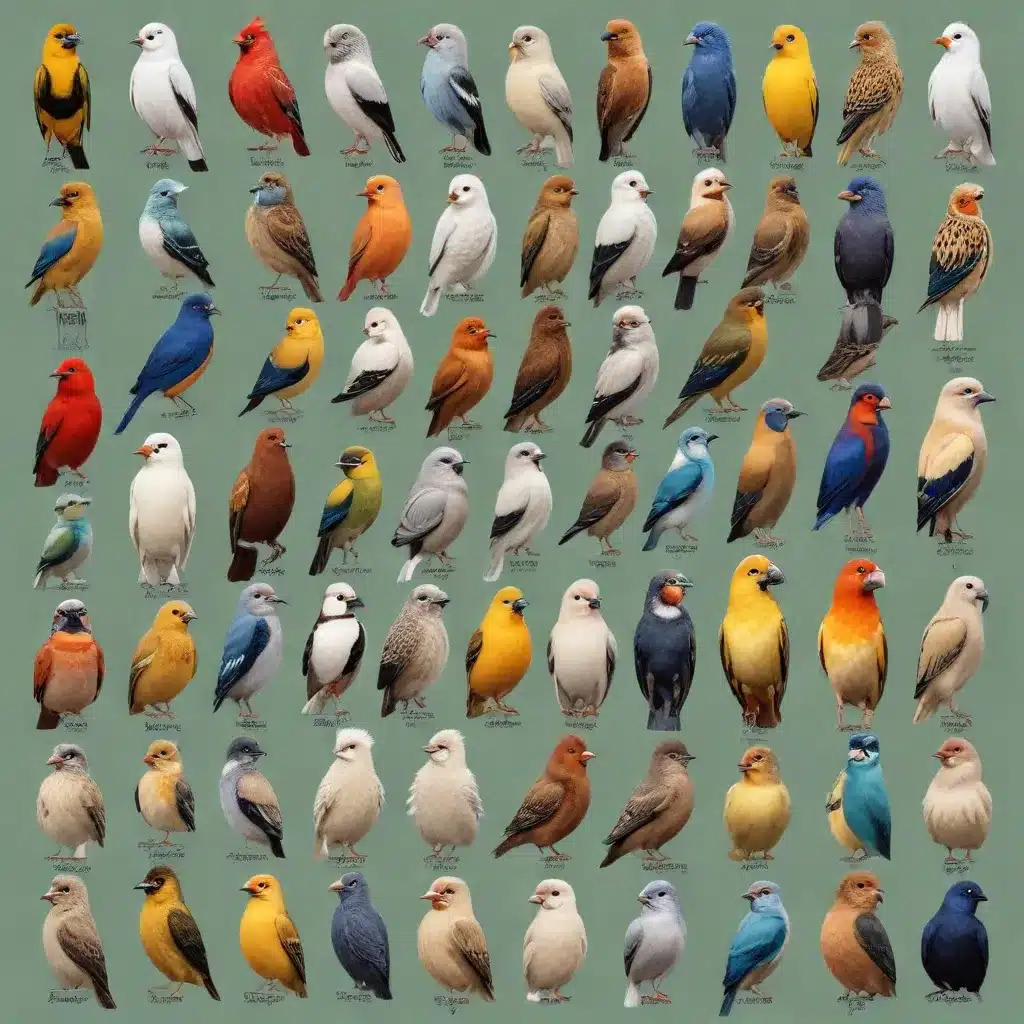
As an experienced avian caretaker and expert in the field, I’ve had the privilege of working with a wide variety of bird species. Each breed has its own fascinating physiology, dietary requirements, habitat preferences, and behavioral tendencies. Understanding these unique needs is crucial for providing the best possible care and ensuring the health and happiness of our feathered friends.
Avian Physiology and Anatomy
The avian skeletal system is remarkably lightweight yet incredibly strong, allowing birds to take to the skies. Their respiratory system is also highly specialized, with air sacs that facilitate efficient oxygen exchange. The composition of feathers, from their intricate structure to the array of colors, is truly remarkable.
Skeletal Structure
Birds’ bones are hollow and pneumatic, meaning they are filled with air spaces that reduce overall weight while maintaining structural integrity. This adaptation is crucial for flight, as it enables birds to achieve the necessary lift and maneuverability. The shape and size of the beak, for instance, can vary significantly between species, reflecting their unique feeding habits and dietary preferences.
Respiratory System
The avian respiratory system is a marvel of evolution. Unlike mammals, birds have air sacs that extend beyond the lungs, allowing for a more efficient exchange of oxygen and carbon dioxide. This unique anatomy enables birds to sustain the high metabolic demands of powered flight. However, it also means that birds are particularly sensitive to air quality and environmental pollutants, which can have a profound impact on their respiratory health.
Feather Composition
The intricate structure of feathers is a true testament to nature’s engineering. Each feather is composed of a central shaft, or rachis, with numerous barbs and barbules that interlock to create a smooth, aerodynamic surface. The composition and arrangement of these feathers not only facilitate flight but also play a crucial role in thermoregulation, camouflage, and social signaling.
Common Bird Breeds
The avian world is incredibly diverse, with species ranging from the tiny hummingbird to the majestic bald eagle. Let’s explore some of the most common bird breeds and their unique characteristics.
Passerines (Perching Birds)
Passerines, or perching birds, make up the largest order of birds, accounting for more than half of all known avian species. This group includes songbirds, such as sparrows, finches, and canaries, as well as corvids like crows and jays. Passerines are known for their complex vocalizations, which serve a variety of purposes, from territorial defense to courtship displays.
Waterfowl
Waterfowl, such as ducks, geese, and swans, are adapted to an aquatic lifestyle. Their webbed feet and waterproof plumage allow them to thrive in and around bodies of water. Many waterfowl species are migratory, undertaking remarkable journeys across continents to reach their breeding and wintering grounds.
Birds of Prey
Birds of prey, or raptors, are characterized by their sharp talons, hooked beaks, and keen eyesight. This group includes hawks, eagles, falcons, and owls. These predatory birds play a vital role in the ecosystem, helping to control the populations of small mammals, birds, and reptiles. Their hunting strategies and dietary preferences vary widely among species.
Dietary Considerations for Birds
The diverse dietary needs of different bird breeds are a crucial aspect of their care. Proper nutrition is essential for maintaining overall health, feather condition, and energy levels.
Seed-Eating Breeds
Many popular pet bird species, such as parrots, cockatiels, and budgies, are predominantly seed-eaters. While seeds provide a good source of energy, they can be deficient in certain essential vitamins and minerals. A balanced diet for these birds should include a variety of seeds, fresh fruits, and vegetables, as well as specialized pellets or extruded foods.
Insectivorous Breeds
Some bird species, like hummingbirds and insect-eating songbirds, rely primarily on a diet of insects, nectar, and pollen. Providing the appropriate food sources, such as high-quality nectar mixes or live insects, is crucial for these birds’ well-being.
Omnivorous Breeds
Certain bird species, including crows, ravens, and some parrots, are omnivorous, meaning they consume a varied diet of plant matter, insects, and even small vertebrates. These birds may require a more diverse range of food items to meet their nutritional needs.
Habitat and Environmental Preferences
The optimal living environment for birds can vary significantly depending on the species. Factors such as indoor versus outdoor housing, temperature and humidity requirements, and the provision of enrichment and stimulation are all important considerations.
Indoor vs. Outdoor Housing
Some bird species, like canaries and parakeets, thrive in indoor aviaries or cages, where they can be provided with a controlled environment and protection from predators. Other birds, such as hawks and owls, may require large outdoor enclosures or specialized facilities to accommodate their natural behaviors and space needs.
Temperature and Humidity Needs
Different bird breeds have varying tolerance for temperature and humidity levels. Tropical species, like macaws and cockatoos, often require warmer and more humid conditions, while birds from temperate or arid regions may be better suited to drier, cooler environments.
Enrichment and Stimulation
Regardless of the living environment, all birds require enrichment and stimulation to maintain physical and mental well-being. This can include perches of varying sizes and textures, toys, and opportunities for natural behaviors like foraging, climbing, and exploring.
By understanding the unique needs of different bird breeds, we can provide the best possible care and create an environment that allows our feathered companions to thrive. At Mika Birds Farm, we are dedicated to promoting avian welfare and supporting bird owners in their efforts to give their pets the highest quality of life.


